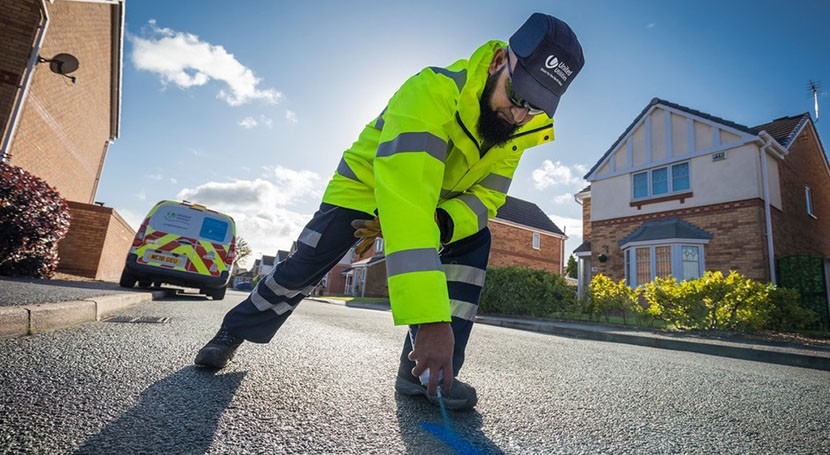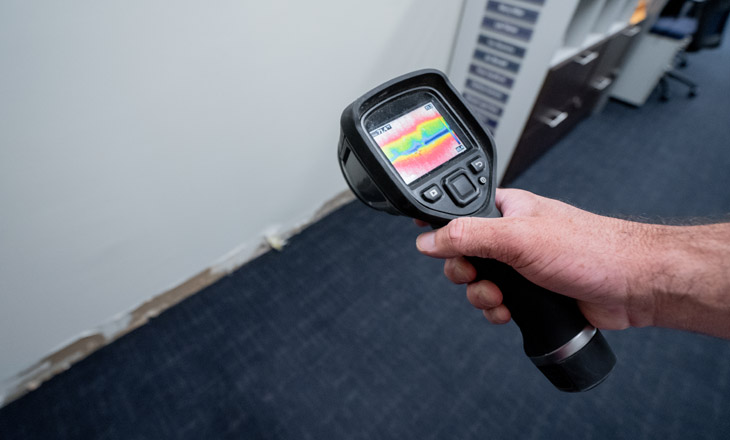Ingenious Solutions for Early Discovery of Water Leaks in Structures and Infrastructure
As the honesty of buildings and framework is vital, the challenge of very early detection of water leakages has stimulated ingenious remedies that guarantee to revolutionize the means we protect versus prospective problems. From advanced leakage detection innovations to the deployment of IoT sensing units for real-time tracking, the landscape of leakage prevention is advancing rapidly. Machine discovering formulas offer a look into the future of leak forecast, while thermal imaging presents a non-intrusive approach for identifying surprise leaks. Automated water circulation analysis systems are improving how leaks are identified and addressed, paving the means for a proactive approach to water leakage discovery. Each of these solutions holds the essential to ensuring the integrity and longevity of our developed environment, motivating a shift in the direction of a more lasting and effective future.
Advanced Leakage Detection Technologies
Advanced leak detection modern technologies, equipped with sophisticated sensing units and algorithms, play a critical duty in quickly identifying and determining water leaks in different setups. Electromagnetic sensing units can determine modifications in electro-magnetic areas triggered by water, supplying yet one more layer of leakage detection ability.

IoT Sensors for Real-Time Tracking
In the world of modern-day water leakage detection, the combination of IoT sensors for real-time surveillance stands for a pivotal innovation in enhancing positive leak discovery capacities. These sensing units offer constant monitoring of water systems, supplying real-time information on water circulation rates, stress variants, and temperature level adjustments. By leveraging IoT modern technology, these sensors can discover also the smallest abnormalities in water use patterns, enabling early identification of possible leakages prior to they rise into major problems.
IoT sensing units transfer data to a centralized system, where advanced algorithms evaluate the information and create alerts or alerts when irregularities are found. This real-time tracking ability allows property owners or center managers to promptly address leakages, reducing water damages, reducing repair work expenses, and preserving water resources.
Moreover, IoT sensing units can be incorporated with building administration systems, allowing for automatic feedbacks to identified leaks, such as closing off water shutoffs or activating pumps to minimize the effect of leaks. Generally, the application of IoT sensors for real-time surveillance substantially boosts the effectiveness and effectiveness of water leak discovery in structures and framework.
Maker Knowing Algorithms for Leakage Prediction

One key benefit of making use of artificial intelligence for leak prediction is its capability to continually discover and enhance its precision gradually. As even more information is accumulated and fed right into the formula, it can fine-tune its forecasts and adapt to changing conditions, ultimately raising the dependability of leakage discovery systems.
In addition, artificial intelligence algorithms can help in recognizing subtle signs of leaks that may go undetected by conventional tracking techniques. water leak detection. By assessing complex data embed in real-time, these algorithms can give early warnings and notifies, enabling punctual treatment and precautionary upkeep to mitigate prospective water damages and associated expenses
Making Use Of Thermal Imaging for Leakage Discovery
Thermal imaging innovation offers an encouraging technique for detecting water leakages in different systems and frameworks. By making use of infrared radiation and temperature variances, thermal imaging video cameras can determine surprise leaks that are not easily noticeable to the naked eye. When water gets away see this here from pipes or structures, it often alters the temperature of the surrounding area, creating temperature level differentials that thermal electronic cameras can capture. These temperature irregularities are after that translated into noticeable pictures, highlighting the specific place of the leak.
Among the crucial benefits of thermal imaging for leakage detection is its non-intrusive nature. Unlike standard techniques that might need burglarizing walls or floors to locate leaks, thermal imaging enables non-destructive screening. This not just conserves time and lowers prices however likewise lessens interruption to the building or infrastructure being analyzed. In addition, thermal imaging can promptly check big areas, giving a thorough review of prospective leak sources in a prompt fashion. Generally, the usage of thermal imaging innovation enhances the efficiency and precision of water leakage detection, making it a valuable device for keeping the stability of buildings and frameworks.
Automated Water Flow Evaluation Solutions
How can computerized water circulation analysis systems change the detection and monitoring of leaks in various systems and facilities? Automated water flow evaluation systems use a proactive strategy to leak discovery by continually checking water flow prices and patterns. By developing baseline information, these systems can swiftly determine here inconsistencies that may indicate a leak, enabling punctual intervention to stop extensive damages.
These systems utilize innovative algorithms to analyze real-time information and give immediate informs when anomalies are detected, enabling quick action to be taken. Furthermore, computerized water flow evaluation systems can be integrated with structure management systems or IoT platforms, boosting general performance and enabling remote surveillance capabilities.
Furthermore, the data collected by these systems can be used for predictive maintenance functions, assisting to identify potential weak points in the my site facilities before leaks happen. In general, the application of automated water flow analysis systems can significantly improve leak detection and management techniques, inevitably bring about set you back savings, decreased water wastage, and increased sustainability in structures and facilities.

Conclusion
Finally, the integration of sophisticated leakage discovery modern technologies, IoT sensing units, machine learning algorithms, thermal imaging, and automated water flow analysis systems provides innovative services for early detection of water leaks in buildings and infrastructure. These technologies enable real-time monitoring, forecast of leakages, and reliable discovery approaches to stop water damages and wastefulness. Carrying out these options can assist in preserving the stability and sustainability of water systems in different settings.